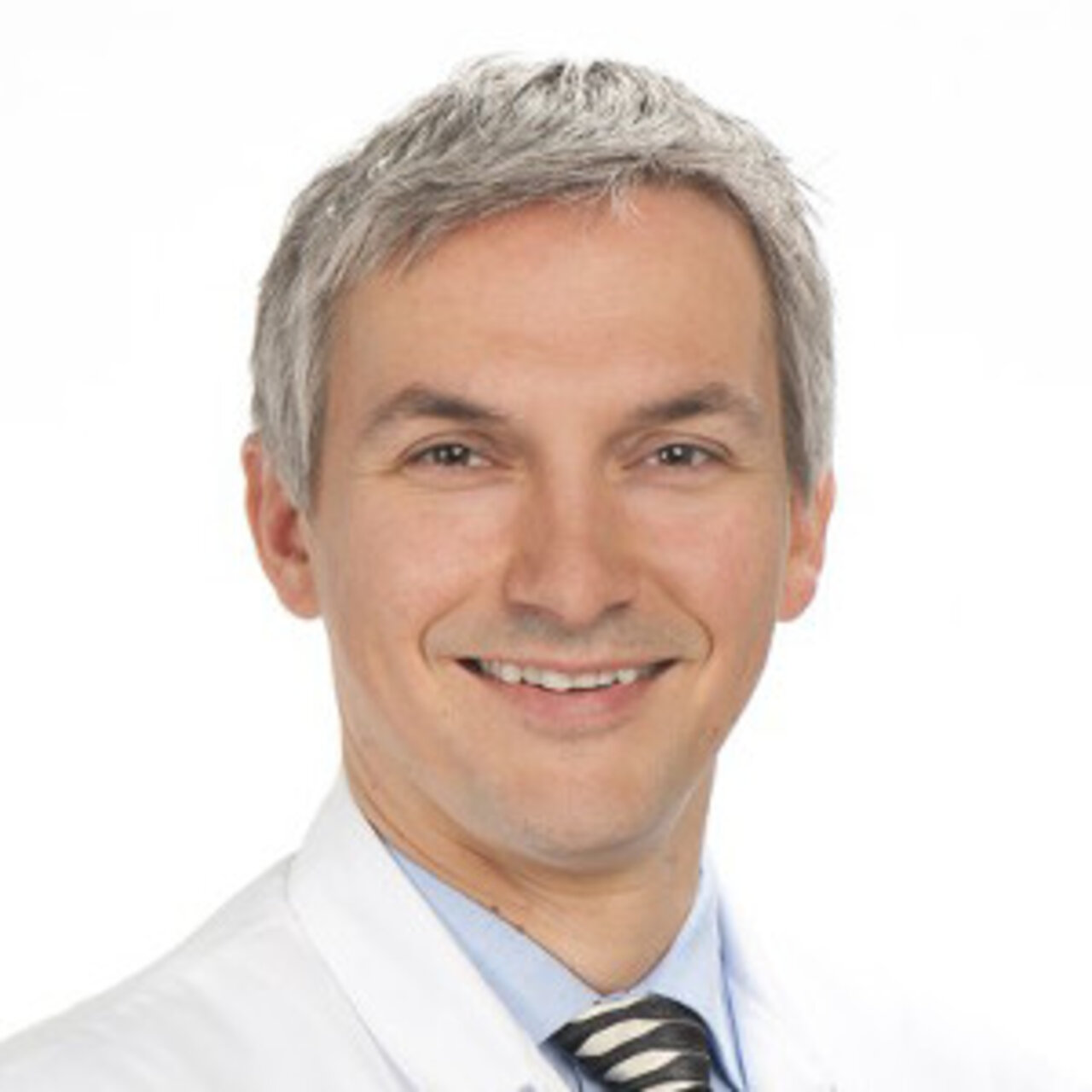Specialists in Cirrhosis
4 Specialists found
Information About the Field of Cirrhosis
What is liver cirrhosis?
Liver cirrhosis (from the ancient Greek words hepar for liver and kirros for yellow/orange) refers to a process during which the liver tissue is remodeled into fibrous connective tissue (scar tissue), accompanied by a gradual loss of liver function. This transformation is irreversible, only further progression of the remodeling can be halted.
The liver cells have a very specific structure that allows them to perform a wide range of functions. If these cells transform into connective tissue, for example due to chronic inflammation, this leads to functional impairment of the liver.
The liver performs vital functions in the body. Therefore, any impairment of its function is a serious disease. The liver has a detoxification function and is responsible for the breakdown of endogenous substances such as hormones, and exogenous substances, for example alcohol or medications.
In addition, the liver produces a plethora of important substances. These include, apart from coagulation factors, bile fluid which facilitates the absorption of dietary fats in the small intestine.
The liver is a central metabolic organ and is of great importance for the metabolism of carbohydrates, fats, and proteins. It also contributes to the maintenance of a constant blood sugar level.
Furthermore, it is involved in the regulation of acid-base balance, immune responses, and the storage of vitamins.
Liver cirrhosis is a relatively common disease in Western industrialized countries. On average, around 250 out of 100,000 people develop liver cirrhosis annually in Germany and the US. Men are affected twice as often as women.
Causes: What can lead to a liver cirrhosis?
Liver cirrhosis can result from various liver diseases. The common terminal pathway of these diseases that results in liver cirrhosis is a chronic inflammation of the liver (hepatitis). The excessive stress on the liver cells (hepatocytes) causes their remodeling into fibrous connective tissue.
In most cases, a chronic hepatitis is caused by excessive alcohol consumption. This accounts for approximately 55% of cases in industrialized countries.
About 40% of patients have a viral infection of the liver, called viral hepatitis. It is most commonly caused by hepatitis types B, C or D, which have a tendency to chronification and can permanently damage the liver.
The remaining 5% are accounted for by rare metabolic disorders, for example involving iron or copper metabolism, hepatotoxic medications, or autoimmune disorders. In autoimmune hepatitis the body’s immune cells mistakenly recognize the liver cells as foreign and attack them. In some rare cases, right-sided heart failure, tropical diseases or non-alcoholic fatty liver disease may also be responsible for liver cirrhosis.
What are the first signs of liver cirrhosis?
The liver is generally known to “suffer silently”, which refers to the fact that many liver diseases don’t cause any symptoms for a very long time. This is because the liver is not innervated by sufficiently sensitive nerve fibers and therefore does not transmit pain signals. Often, patients experience nonspecific symptoms such as fatigue, exhaustion, diffuse upper abdominal discomfort or weight loss.
As the disease progresses, symptoms caused by liver function failure start appearing. Jaundice develops due to impaired bile excretion.
The term “jaundice” describes a yellow discoloration of the skin and mucous membranes caused by the deposition of bilirubin. Bilirubin is a breakdown product of hemoglobin from red blood cells, which is normally excreted with bile. Jaundice is usually accompanied by dark colored urine, pale stools and itching of the skin.
Due to the impaired detoxification, brain damage can occur, known as hepatic encephalopathy. Further symptoms include a typical breath odor (foetor hepaticus) and disturbed metabolism of female sex hormones (estrogens). This can lead to impotence, testicular atrophy, or gynecomastia in men, and irregular menstrual cycles in women.
Insufficient production of plasma proteins and coagulation factors result in fluid retention and a tendency to bleed. The lack of plasma proteins leads to a fluid shift from the blood vessels into the surrounding tissues, resulting in edema. Edematous fluid in the abdominal cavity is referred to as ascites.
Since a large portion of the blood from the gastrointestinal tract flows through the liver before reaching the heart, the formation of a bypass circuit can occur. Due to the impaired blood flow through the scarred liver, blood starts backing up and is diverted through other vessels that are not intended for this purpose. This can lead to enlargement of the spleen (splenomegaly), skin signs (e.g. dilated veins around the navel) and varicose veins in the esophagus (esophageal varices).
How is a liver cirrhosis diagnosed?
Suspicion of liver cirrhosis arises during the medical history taking (patient interview) and physical examination. Blood tests are done to confirm this suspicion. Special attention is paid to the so-called “liver function tests”. These include:
- AST (GOT)
- ALT (GPT)
- Gamma-glutamyl transferase (GGT)
- Cholinesterase
- Total protein (albumin)
- Coagulation parameters (Quick/INR)
- Bilirubin levels (direct and indirect)
The first medical imaging ordered is typically an ultrasound (sonography), due to its high diagnostic value and minimally invasive nature. The ultrasound can visualize significant pathological changes. The liver is often pathologically enlarged or shrunken, shows a nodular surface or altered echotexture. Additionally, the spleen can be assessed which is often enlarged in liver cirrhosis.
These steps are usually sufficient to diagnose liver cirrhosis. If uncertainties persist or another evaluation of the disease is sought, further diagnostic procedures may be ordered. These include CT scans of the liver or biopsies, with subsequent histopathological examination.
Based on the collected findings, the severity of liver cirrhosis can be assessed. Clinicians use the Child-Pugh score which is classified into classes A, B and C. This classification helps provide guidance for prognosis and treatment planning.
The Child-Pugh-Score incorporates several factors including laboratory parameters and the presence of ascites and brain dysfunction (hepatic encephalopathy).
Treatment: How is a liver cirrhosis treated?
The treatment of liver cirrhosis depends on the underlying cause and the stage. Regardless of the severity of the disease, there are a few general measures that are strongly indicated in all patients to improve general health and prognosis.
It is critical to strictly avoid hepatotoxic substances, such as alcohol or specific medications. Appropriate nutritional therapy is also recommended for all patients with liver cirrhosis.
Depending on the cause of the liver cirrhosis, it is advisable to eliminate and address any underlying triggers of the disease. In the case of viral hepatitis, the treatment involves antiviral medication. Similarly, there are targeted medications available for metabolic and autoimmune disorders.
Since liver cirrhosis carries a potential risk of progression to liver cancer (hepatocellular carcinoma), it is recommended that affected individuals participate in regular screening. This includes periodic ultrasound examinations of the liver as well as blood tests.
If all these therapeutic measures are insufficient, a liver transplant may become necessary.
Prevention and early detection of liver cirrhosis
To prevent the development of liver cirrhosis, underlying causative factors should be reduced or eliminated entirely. Since excessive alcohol consumption is the most common causative factor, it is crucial to drink responsibly as a preventative measure and to slow disease progression.
Various preventative measures can be taken for viral hepatitis. These include specific vaccinations for general protection or for individuals planning to travel to high-risk regions.
If certain predisposing conditions, such as disorders of metabolism, are present, which can lead to cirrhosis, regular check-ups are recommended. In these cases, it is advisable to be particularly careful with the use of potentially hepatotoxic medications and alcohol.
The aim of these measures is to prevent the onset of liver cirrhosis or to detect it at an early stage. If liver cirrhosis is already present, it must be treated diligently and monitored closely to reduce the risk of complications and improve the long-term prognosis.
Life expectancy and complications of liver cirrhosis
The life expectancy largely depends on the stage of the liver cirrhosis. The 1-year survival rate for patients classified as Child-Pugh class A (least severe) is nearly 100%. In comparison, Child-Pugh class B (moderate severity) has a 1-year survival rate of 85%, while Child-Pugh class C (most severe) has a survival rate of just 35%.
The most common cause of death in patients with advanced liver cirrhosis is acute liver failure and variceal bleeding. Varices develop due to portal hypertension, causing the formation of collateral circulation in the esophagus. However, the veins in the esophagus are not structurally equipped to withstand such high levels of blood flow and ruptures can lead to life-threatening bleeding.
In addition, liver cirrhosis is associated with an increased risk of developing liver cancer. The 5-year survival rate of patients with liver cancer ranges from 20% to 70% depending on the stage at diagnosis.
What physicians and clinics in Germany, Austria and Switzerland are specialists in liver cirrhosis?
Specialists in internal medicine, particularly those with an additional qualification in hepatology, are the most qualified medical professionals for liver cirrhosis. There are also specialized clinics that have established dedicated programs, offering patients an interdisciplinary approach.
Liver cirrhosis is a serious medical condition. Therefore, treatment should always be carried out by experienced and qualified medical experts. We are committed to connecting patients with suitable specialists. All physicians have been carefully reviewed and selected.
The listed specialists are experts in the field of hepatology and have extensive experience in the treatment of liver cirrhosis. You can get in touch with our specialists – they look forward to hearing from you.



